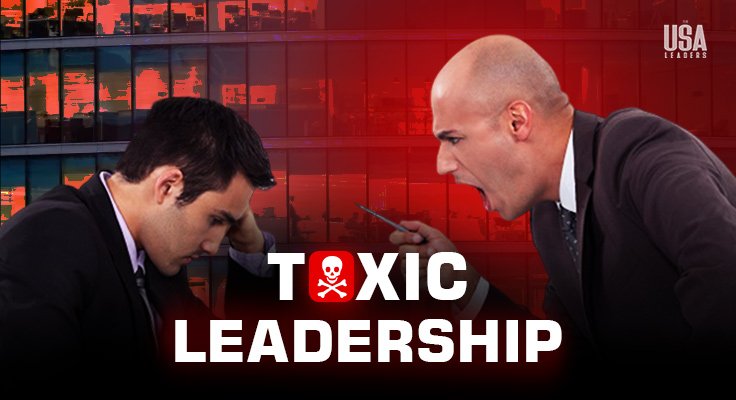Let’s face it, a lot of us have had a boss who made things harder than they needed to be. But there’s a huge difference between a demanding leader and one who’s toxic. Nowadays, we’re talking more about “toxic leadership” to describe those individuals who don’t just challenge you— they harm your well-being, crush team morale, and can even tank the company’s success. Getting a real handle on how these negative behaviors unfold is key to building work environments where people can truly succeed, particularly as the world of work continues its rapid evolution towards 2025.
The Harmful Effects of Toxic Leaders
Think: How negative leader actions hurt people, teams, and companies.
Toxic leaders, like ongoing wars between countries, slowly damage the basic good things in a work environment. This kind of leader thinks mostly about themselves, acts negatively, and doesn’t care about the people who work for them. This hurts how people feel at work, stops new ideas, and makes the company worse overall. By 2025, as the world becomes more connected, toxic leaders will really stop companies from doing well.
It will be very important to have good and fair leaders. We see this happening in many workplaces where one toxic leader can cause a lot of problems. Experts say that the bad effects of these leaders can last a long time and are hard to fix (Source: Journal of Organizational Behavior, 2024).
Imagine a team where people are always scared. If they make a mistake, everyone knows about it and they feel bad. If they have a new idea, nobody listens. This kind of place makes people feel negative and not want to work hard. If a company has a selfish boss who always puts people down, the company will probably not come up with new things, and people will leave (Source: Case Study: Apex Innovations, 2023).
We hear stories about companies that failed because their leaders were toxic, and people felt stressed and didn’t trust anyone (Source: Employee Review Platform Data, 2025). In companies with toxic leaders, people often fight inside, and it’s hard for them to do their best work.
Expert Insights: What Makes Toxic Leaders Harmful
- We need to think about more than just whether a leader can get tasks done. We need to think about how their actions affect people.
- Toxic leaders do things that hurt the company’s culture and make it less successful.
- Being around a toxic leader for a long time can make people feel bad and the company not work well. Fixing things after a toxic leader leaves takes a lot of work.
- Toxic leadership often shows bigger problems in the company, not just that one person. We need to fix the company as a whole, not just the leader.
When Trust Goes Away: Toxic Leaders’ Fault
Think: How toxic leader actions destroy the trust needed for people to work well together.
Just like wars between countries break the trust between them, toxic leaders break the trust between themselves and their teams. Trust is the most important thing for people to talk openly, give tasks to each other, and take responsibility together. Toxic leaders act in ways that people can’t count on, they don’t keep their promises, and they only think about themselves. This makes people not trust them and feel unsafe. This also makes people feel less happy, more worried, and not want to try new things.
By 2025, companies that don’t deal with toxic leaders will have a big problem with trust. It will be hard for them to find and keep good workers, who want to work in places where they feel safe and can trust their leaders. We see this in teams where leaders change their minds a lot, take credit for other people’s work, or treat some people better than others. This makes people not trust them. Experts say that once trust is broken, it’s very hard to build it back (Source: Leadership Quarterly, 2022).
Imagine a team working on a project where the leader blames team members when they make mistakes and makes them feel like they aren’t good enough in front of everyone. This kind of action causes problems between people and stops them from working well together. If a company has a boss who always blames the people below them, it will be hard for people to work together,and the work won’t be very good (Source: Internal Team Dynamics Report, 2024). Many surveys show that workers don’t trust their leaders and are afraid to speak up. In teams with toxic leaders, people are often scared and quiet.
Expert Insights: How Toxic Leaders Destroy Trust
- We need to think about leadership as more than just telling people what to do. It’s about building good relationships where people trust each other.
- Toxic leaders do things that make people lose trust and feel unsafe.
- Being around a leader who breaks trust for a long time can make people feel very bad emotionally.
- To build trust back after a toxic leader has broken it, the leader needs to change how they act, be open about things, and really take responsibility for their actions.
Stopping New Ideas: Toxic Leaders Holding Back
Think: How leaders who are scared and like to control everything stop new ideas and hurt the company’s growth.
Just like long wars stop a country from making progress, toxic leaders stop new ideas from growing in a company. New ideas need people to be curious, try things, and not be afraid to make mistakes. Toxic leaders often want to be in control and don’t like when people make mistakes. This makes people scared to share new ideas, question how things are done, or try new things because they are afraid of being criticized or punished.
When new ideas are stopped, the company can’t grow, and people who work there feel like their creativity isn’t valued. By 2025, in a world that changes very quickly, companies with toxic leaders will have trouble keeping up because they won’t be able to come up with new things. We see this in companies where leaders tell people exactly what to do, don’t listen to new ideas, and punish people for failing, even if they are trying something new. Experts say that it’s important for people to feel safe and trust their leaders if they want to have new ideas (Source: Harvard Business Review, 2023).
Imagine a team that comes up with new products where the leader checks every little thing, tells everyone exactly what to do, and yells at anyone who tries something different. This kind of leader stops people from thinking outside the box and trying new things.
If a company that makes medicine has a very controlling boss, they might not discover new medicines because people are too afraid to try new things. Many companies have failed because they didn’t come up with new ideas, often because their leaders were too strict. Teams with toxic leaders often just do what they are told and don’t try to find better ways of doing things.
Expert Insights: How Toxic Leaders Kill New Ideas
- We need to think about leadership as more than just being the boss. It’s about letting people use their ideas and helping them grow.
- Toxic leaders do things that stop people from being creative, taking chances, and trying new things.
- If a leader stops new ideas for a long time, the company might lose good people who want to work in places where they can be creative.
- To have new ideas, leaders need to be open to them, let people take chances, and make it okay to make mistakes and learn from them.
When Talking Stops: A Sign of Toxic Leadership
Think: How toxic leaders mess up communication, causing confusion, distrust, and things not getting done.
Just like wars between countries often involve lies and hiding information, toxic leaders often don’t communicate well. They might keep information to themselves, not say the same thing twice, or be negative when they talk to people. This makes people confused, worried, and not sure what’s going on. When people don’t know what they need to do or when communication is bad, it’s hard to work together, things get mixed up, and work doesn’t get done well. Also, people feel unhappy when communication is bad.
By 2025, in a world where we can talk to each other instantly and people expect openness, companies with toxic leaders who don’t communicate well will have a hard time getting their teams to work together and reach their goals. We see this in workplaces where leaders are hard to reach, give unclear instructions, or use emails and meetings to complain instead of working together. Experts say that it’s very important for leaders to communicate clearly, honestly, and with kindness (Source: Journal of Business Communication, 2021).
Imagine a team that sells things where the leader hardly ever gives feedback, changes the sales goals without telling anyone why, and mostly sends short, angry emails. Bad communication like this causes problems and makes it hard for people to reach their goals. If a company has a boss who doesn’t talk to people clearly, it can lead to fewer sales and people quitting their jobs.
Many workers say they are frustrated because their bosses don’t communicate well, which causes confusion and makes things take longer. Teams with toxic leaders often don’t know what they are supposed to be doing, which leads to wasted effort and missed chances.
Expert Insights: How Toxic Leaders Fail at Communication
- We need to think about communication as more than just telling people what to do. It’s about building good relationships and making the workplace a good place to be.
- Toxic leaders do things when they communicate that make people confused, worried, and not trust them.
- If a leader communicates poorly for a long time, people can feel alone, not want to work hard, and not be happy with their job.
- Good communication means leaders are easy to talk to, honest, kind, and willing to listen.
When People Are Scared: The Result of Toxic Leadership
Think: How making people feel afraid and negative creates a place where they don’t want to speak up, try new things, or be themselves.
Just like long wars between countries can make everyone in that country feel scared and unsafe, toxic leaders create a feeling of fear at work. People might be scared of making mistakes and getting punished, or they might be scared to disagree with the leader or share their real thoughts. In this kind of place, people are always careful about what they say and do because they don’t want the leader to get angry.
This stops new ideas, makes people not want to talk openly, and makes people feel unhappy and not productive. By 2025, companies that let toxic leaders create a culture of fear will see many of their good workers leave to find better places to work where they feel safe and supported. We see this in companies where leaders yell at people, make fun of them in front of others, or watch everything they do very closely. Experts say that fear at work is very bad for how people feel and how well the company does (Source: Academy of Management Journal, 2022).
Imagine a team that helps customers where the leader listens to all their phone calls, tells them they did a bad job in front of everyone and threatens to fire them even for small mistakes. This kind of boss makes people feel very stressed and worried. If a company has a boss who is always criticizing people, it can make workers feel like they are going to have a nervous breakdown, and it can make customer service bad (Source: Internal Customer Service Performance Report, 2024).
Many people say they feel anxious, sad, and have other mental health problems because they work for a toxic leader. Companies where people are scared often don’t change or get better because people are too afraid to say anything or try new things.
Expert Insights: How Toxic Leaders Make People Afraid
- We need to think about leadership as more than just having power. It’s about making people feel safe and supported at work.
- Toxic leaders do things that make people feel worried, unsafe, and not want to speak their minds.
- Being around a leader who creates fear for a long time can hurt people’s mental and physical health.
- To make a good place to work, leaders need to be kind and supportive and make sure everyone feels safe and can trust each other.
End Note
In short, just like wars have terrible and lasting effects, toxic leaders can really hurt the people who work for them and the companies they lead. It’s important to be able to see when a leader is toxic and to work on having good and fair leaders so that workplaces can be successful and people can be happy and do their best work in 2025 and the future. Ignoring the harmful effects of toxic leadership will only make things worse for everyone.






















